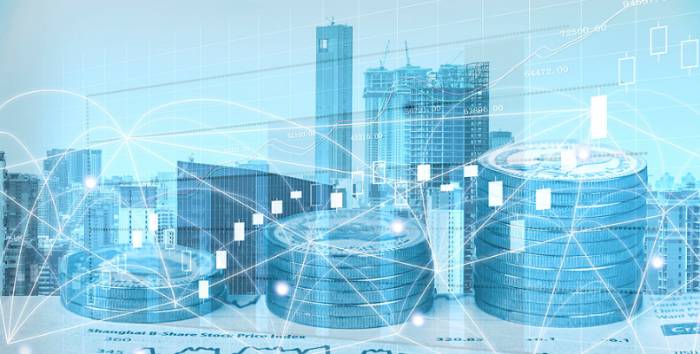U.S. Consumer Inflation Expectations Hit 40-Year High in October
For months, interest rates and expectations of rate cuts have dominated financial headlines. While traders have been busy with dot plots and Federal Reserve speeches, the sentiment of American consumers towards inflation provides a potential warning signal that if the cost of living begins to rise again, the Fed may actually be forced to maintain or raise the benchmark interest rate.
Analysts at The Kobeissi Letter have noted: "U.S. consumer expectations for inflation over the next 5-10 years surged to 7.1% in October, the highest level in over 40 years. According to the University of Michigan's consumer survey, this metric has doubled in just a few months." They emphasized: "To put this in perspective, the median inflation expectation over the past three years has been around 3%. The rise in the price of necessities has severely damaged consumer sentiment, with expectations getting worse." The analysts added: "This is because core CPI inflation has remained above 3% for 41 consecutive months, the longest stretch since the early 1990s." "Inflation remains a major concern for Americans, and we are starting to see signs of inflation accelerating again. Last week, core CPI inflation jumped for the first time since March 2023. The Fed's 50 basis point rate cut is playing a dangerous game."
Author Lawrence McDonald also highlighted the recent surge in inflation expectations and noted that the last time inflation expectations were this high was just before the collapse of Silvergate Bank. Although Fed spokespeople and financial experts have pointed to various causes of "sticky" inflation (ranging from the aftermath of the pandemic to escalating geopolitical tensions and conflicts), at least in mainstream media, one explanation that has not received due recognition is the link between inflation and the money supply (which has started to climb again).
Advertisement
Analysts at The Kobeissi Letter emphasized: "The U.S. money supply reached $21.17 trillion in August, the highest level since January 2023, marking the fifth consecutive month of growth in the U.S. money supply. Over the past 10 months, the circulation of the dollar has surged by $484 billion." They stated: "In fact, the money supply is now only $548 billion below its all-time high. After a brief downturn, the amount of money in the financial system has surged again, raising concerns about another wave of inflation. Will inflation make a comeback in 2025?"
According to Spencer Hakimian, founder of Tolou Capital Management, the root of the current problem can be traced back to 2008, and inflation will continue to be a forward-moving issue unless drastic measures are taken. He said: "Mainly due to the scars of 2008, mainly because the conventional wisdom was that policymakers did not do enough after 2008, Washington's response to the pandemic became frantic. The $6 trillion stimulus for the $20 trillion economy, reaching 30%, is three times that of 2008." The real difference lies in how the money was spent. He said: "In that era, most of the money was given directly to consumers, and consumers spent all the money. At the same time, most of this newly issued debt was purchased by the Fed (which means new money was created, not funded by private enterprises, that is, there was no crowding out effect)." He emphasized: "What was the result? The recovery was very rapid, but almost as quickly, inflation approached a 50-year high. This is because, unlike in 2008, this money was provided directly to consumers, and the money supply increased by 50%. New money was provided directly to consumers and was encouraged to be spent. The demand for goods and services > the supply of goods and services = inflation."
He said: "The slow recovery of 2008 was replaced by the too-fast recovery of 2020. By August 2020, the stock market was back at an all-time high. If you blinked, you missed it. Nominal GDP is nearly 50% higher than before the pandemic, and real GDP is nearly 25% higher." He emphasized: "This is where it really gets crazy. Unlike 2012-2019, we did not return to a normal deficit (2-3%), we now have a permanent deficit like in 2008, most of which is structural (social security, Medicare, etc., related to an aging population), but a lot is also tactical. Politicians realized that in a system where everyone votes every two years, increasing spending and reducing taxes is the best strategy."
Hakimian predicts that the U.S. will eventually "get a new demagogue who will exploit the fear of losing our reserve currency status by spending money we don't have and devaluing ourselves to nothing, just like the Dutch and British before us." He concluded: "These are big issues, and I don't think there are more pressing issues of our time. But I'm saying to beware of this future demagogue. He/she certainly doesn't have the answers, just wants to be remembered in history as the President of the United States, with an airport named after him/her."

Entrepreneur Jason Bunnell stated that the performance of gold in recent months indicates that the Fed is beginning to lose control and may soon have to deal with runaway inflation. Bunnell pointed out: "The price of gold in 2019 = $1,394, the price of gold in 2024 = $2,305, the compound annual growth rate of gold over 5 years is 12.9%, so the inflation rate of this administration is about 13%. That is to say, in 5 years, the price of gold has almost doubled." He said: "The Fed cannot overcome inflation caused by printing money by using quantitative easing, because the target inflation rate is 4%. There is no historical example that shows this will not lead to runaway inflation."
All of this leads to a stark reality that investors need to understand in the face of rising costs, and why assets like gold are being called stores of value and becoming a focus of attention.
Leave A Comments